Fuchshofstrasse Primary School, Ludwigsburg
VON M in Ludwigsburg, Germany, designed a unique elementary school building with a wooden hybrid structure emphasizing community spaces, natural materials, and a sustainable color scheme throughout.
In the west of Ludwigsburg, the new 5.5-meter elementary school building extends along the new development area on Fuchshofstrasse to the north. Starting from the design image of a filled bookshelf on a playground, this ideal of school learning between knowledge transfer and social interaction could be transferred to a wooden hybrid building. Like shelves, the three ceiling panels protrude to cover the space and offer the school community space for learning and individual filling in the middle of a flowing outdoor area.
A covered area cut into the building’s cubature on the ground floor welcomes the children and leads parallel to the administration area, along the rooms for school staff, which promotes contact between learners and teachers. When you enter the building you find yourself in the actual heart of the building – the large stair hall.
A strikingly designed wooden staircase penetrates the open air space and is illuminated by a generous skylight with cassette supports. The stair hall not only provides a smooth transition between the entrance area and the playground, but also serves as a break and community area as a place for informal interaction. In addition, the stair hall is the link and distributor to the individual floors. On the eastern side of the central stair hall is the cafeteria located, which impresses as an open, functional meeting place due to its multifunctional use and the attached club kitchen. Thanks to large-scale glazing on both sides of the building, the common room is flooded with daylight and connects the interior with the outdoor area.
Spatial separation between the school community and the learning group
On the upper floors there are learning clusters on both sides of the central stair hall. Illuminated through the inner courtyard, a clear spatial center is organized and indicates the ideal center of the learning group. Flanking the stair hall are specialist, day care and inclusion rooms and connect the set learning clusters with each other. In between there are internal concrete cores which contain all the necessary facilities such as the sanitary facilities of the individual learning units. Attached to the clusters are the individual classrooms, which are connected to the surrounding, arcade-like balcony through at least three window doors. This not only serves as an escape balcony, but can also be used as a break room and allows you to get some fresh air quickly and easily. A wire rope mesh serves as fall protection for the surrounding balcony and at the same time allows plenty of daylight into the classrooms.Materials and colors underline the school building’s sustainable claim
Two escape staircases rise on the narrow sides of the concrete basement, which also serve to reinforce the building. Between this massive structure, the wooden construction develops from prefabricated elements: Cross-shaped wooden supports with their distinctive shape spatially structure the floor plan, give it time and rhythm and, together with glued laminated timber beams and cross-laminated timber panels, complete the supporting structure in a skeleton construction. Thanks to the weather-independent prefabrication of all wooden components, the school building was able to be built with low emissions and cost-effectively – this was also and above all possible thanks to the precise work of everyone involved in the construction, as the planning for the wooden structure in prefabrication was ultimately very compatible with the tolerances of the in-situ concrete on the construction site had to be precisely coordinated.The interior of the school building is characterized by natural materials and colors: A linoleum floor with embedded pieces of cocoa shells that provide structure, natural acoustically effective wood wool ceiling elements and glazed wooden components for supports, doors and furniture complement the atmospheric, calm basic tone with a rough-sawn exposed concrete structure. The color concept is accentuated by the entire interior, including the sanitary facilities and consciously relies on a gender-neutral character. The colors not only serve as a design tool, but also for orientation and identity creation. The color concept can also be found in the clusters, which include furniture made specifically for the Fuchshof School, which can be arranged as a table and bench combination to form various, community-building shapes from a circle to a serpentine line.
This closes the circle of the design idea from the outdoor areas to the common rooms and the community-building centers of the learning clusters to the actual classrooms.
Design: VON M
Photography: Zooey Braun




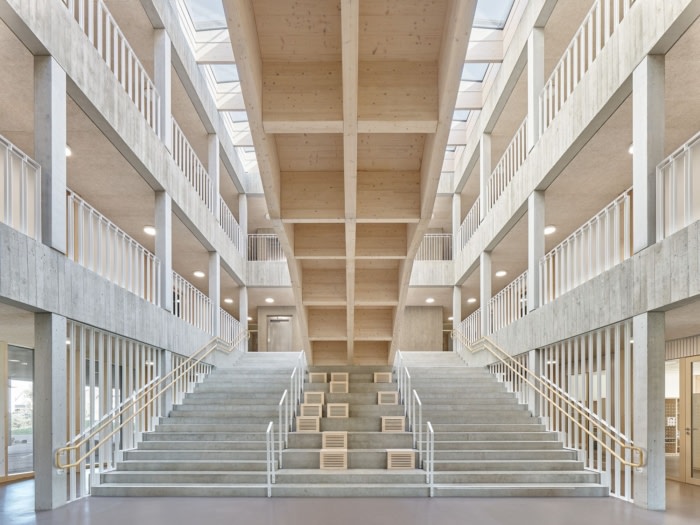
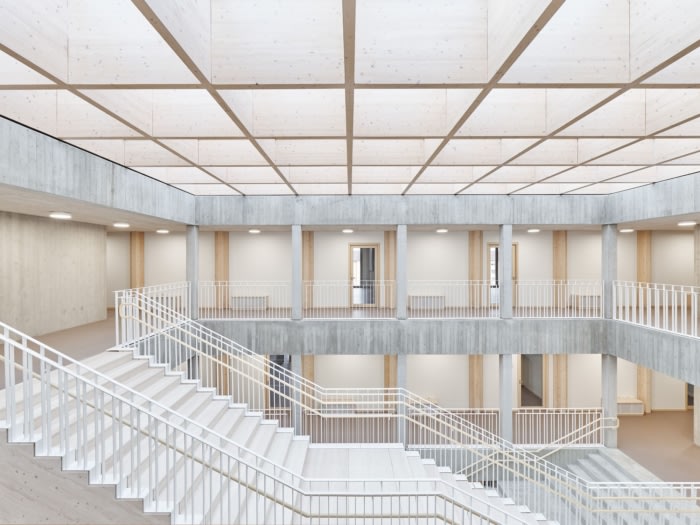
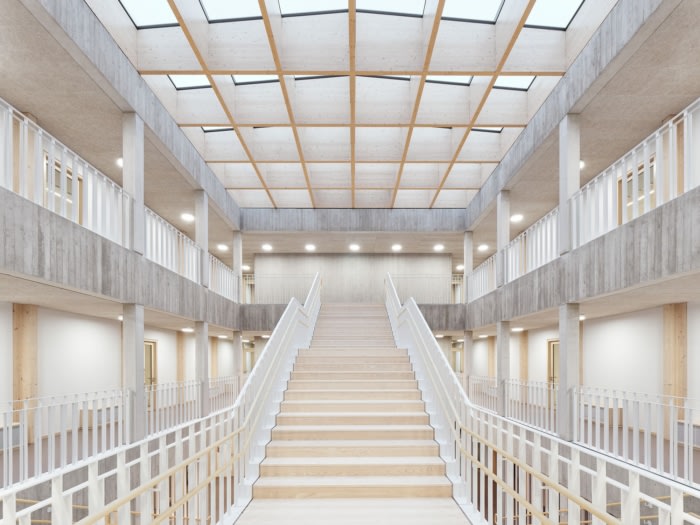
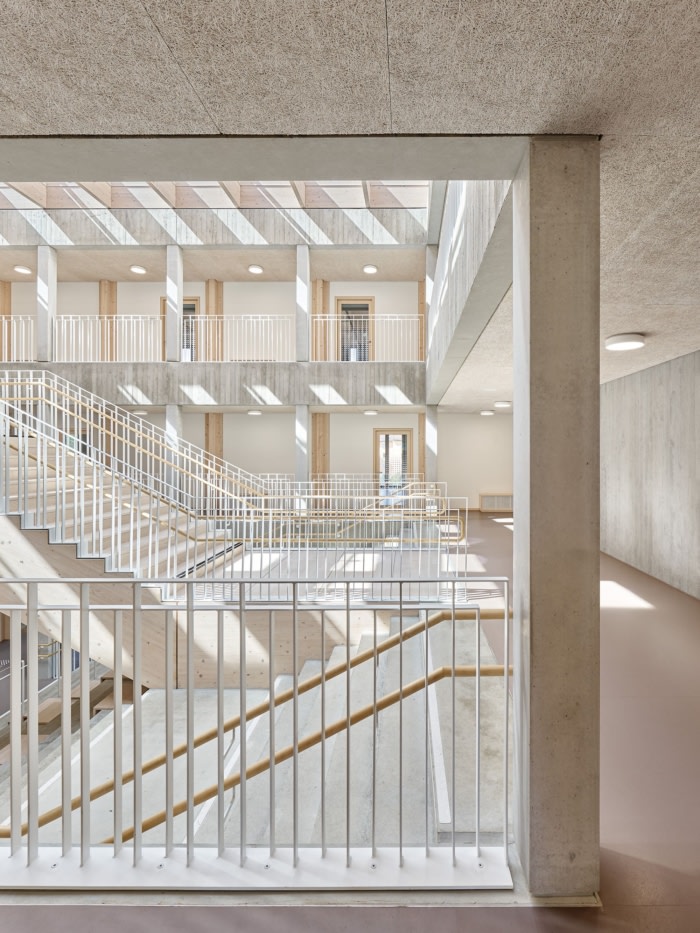
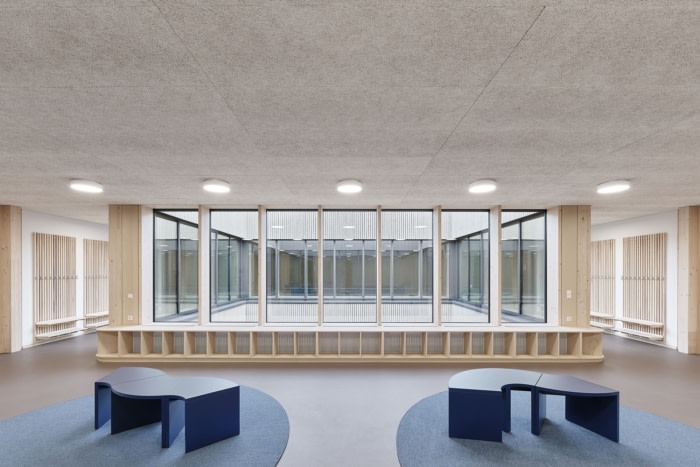

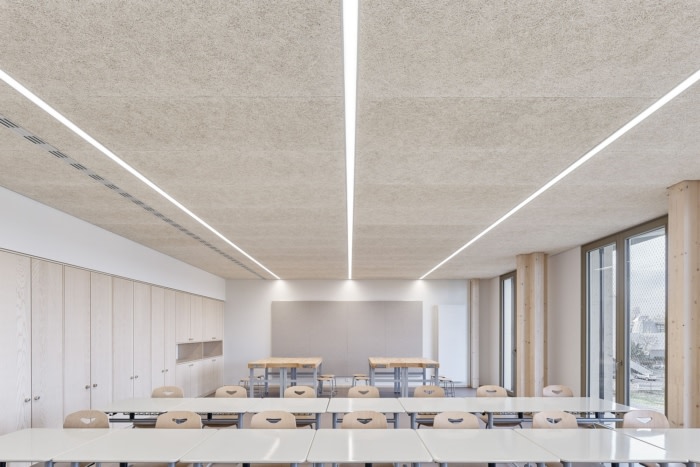
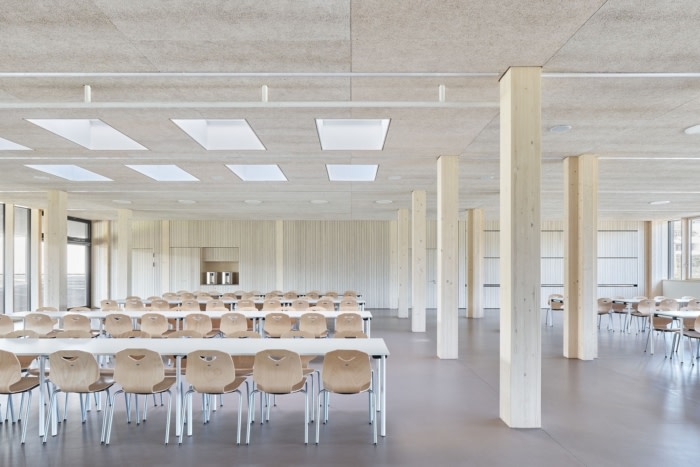
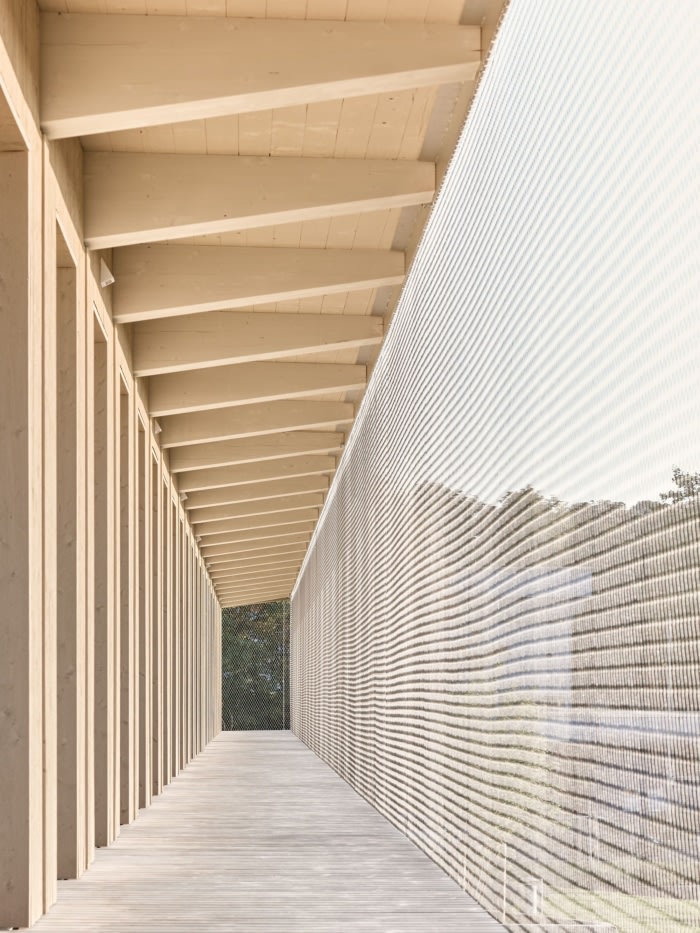



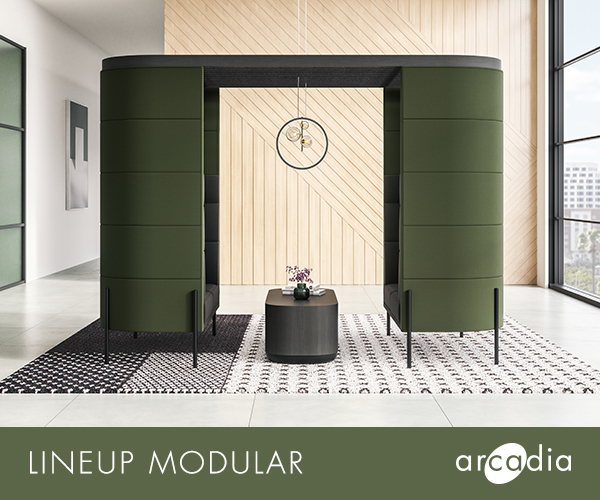
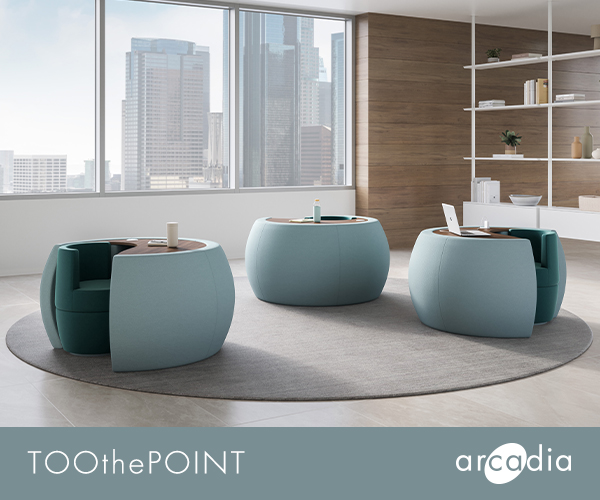




Now editing content for LinkedIn.